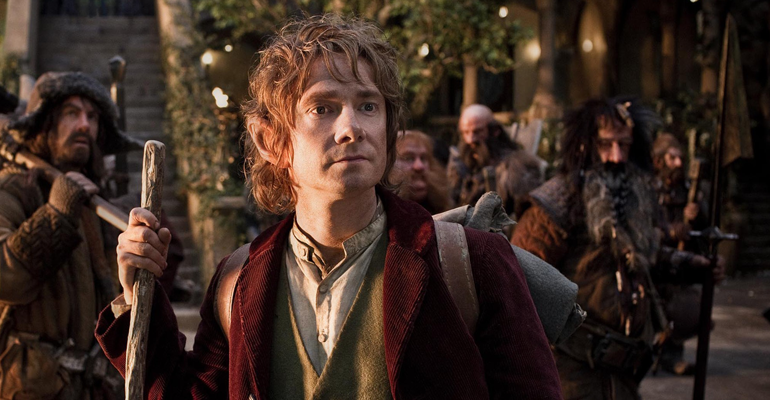At midnight tonight, The Hobbit, the next installment of the Lord of the Rings series comes out. Peter Jackson’s latest exploration of the shire and beyond is just as good as the previous 3 films, and continues the epic journey in style.
However, there is more then meets the eye, literally, with this release. The film is being released in 5 different formats. That’s right, FIVE. One format is the standard 2D format, and then there are 4 versions of the 3D format. IF you are already confused, check out this episode from IndyMogul which goes into great detail about them.
48 FPS is the Shiznit
The version I saw was the 48fps HFR 3D, meaning I saw it at nearly its best quality. The only better version is the IMAX 4K version. However, the version I saw was enough to leave me looking like this in the theater.
For a quick recap, 48 fps (frames per second) is the speed in which the film was shot, AND projected. Normally, if you shoot in 48 fps, you get great detail, but when you play it back at the standard projection rate (24 fps), it looks like slow motion. Film school rejects explains…
By doubling the frame rate, Peter Jackson hoped to eliminate a blurring effect that happens during quick movement and action at 24FPS, but in doing so, creates an unusual experience, one of super smooth motion that has been described as either looking “realistic” or “like shit.”
This has become a huge issue, even breaking out in a twitter debate (as mentioned in Film School Rejects), because critics are both reviewing the film, and the format. That’s how big of a difference it is.
That’s right, the picture is so stunning in its detail, that you have to wonder if the film’s make-up & wardrobe department are slapping themselves upside their heads.
There was more than one time I was watching the film and saying, wow, that’s a fake ear, or, hey, he’s got a wig on. The detail is that good (or bad, depending on your viewpoint). Even the 3D images are crisp. For example, if you have ever watched a 3D movie, you probably noticed that when an image comes toward you in 3D, the closer it gets, the more it fades (or loses opacity). That is no longer the case. In fact, during the ‘regular’ scenes in the shire where the crew is just sitting around eating, talking, and pigging out, it almost looks like someone snuck in there with a GoPro cam, and was filming. I mean, it’s like you are right there.
While the image quality was incredibly impressive, you have to wonder how this will effect movies in the future. The digital FX and matte paintings work seamlessly into the picture. The detail is astounding. However, as I mentioned above, the real live, in-camera stuff like hair, make-up, set design, etc., is probably going to need to up their game. The things that you used to get away with in movies, at 48 fps, are no longer possible.
For example, pretend that you were on the set of ‘The Hobbit’ while it was being shot. I’m sure from walking around the actors, you can tell who is wearing what make-up, prosthetics, wigs, etc. Well, now the same is just about true in the movie. Upon close inspection, you can see just about every detail you would if you were really there.
The Game is Changing
Movies have certainly been undergoing a technological revolution in the last decade. Many of the old school directors, such as Quentin Tarantino, are against digital projection, and are in fact ready to leave the ‘movie’ business altogether. Check out Quentin explaining it himself below….
As with any new advancement, there are always going to be those who embrace the technology, and those that reject it. However, I have to say Quentin makes a really valid point. If movies are going to be just like TV, but with bigger screens, why not just write mini-series for HBO, and not have to worry about the standard 90 minute – 2 hour time length?
Whichever side of the fence you are on, you can see how much impact digital projection at 48 frames per second is making in cinema. Do yourself a favor and find a theater near you that is playing the film in 48. Not only will you be able to form your own opinion, but the experience is priceless.
I can’t wait to take my kids to a movie and tell them I was one of the first to see it projected at 48 fps. By that time it will probably be at 96 fps, and I will seem like my parents telling me how they walked to school in 10 feet of snow. Ah, to get old. 🙂
What’s your opinion?
Are you for or against the move from film to digital projection? Do you think we are trending toward ‘TV in public’, as Quentin called it? Let us know in the comments below.
If you found this content valuable, please follow me on twitter or like us on facebook to receive future updates!



Damn I still haven’t seen it or Lincoln. You make me feel like a jerk for not having seen it yet, I’m going tomorrow.
LoL. Don’t feel like a jerk. I still haven’t seen Django, Cloud Atlas, the Master, Les Mis…..the list goes on. However, this technology jump IS worth witnessing more then anything else. Enjoy and let us know what you thought!
I know that’s why I feel bad, I did see django though and it was pretty sweet.
I want to see cloud atlas too. Imho best trailer ever made. I’m a big sci-fi guy though.
Btw did you see I included your links…
And gimme some rel=”do-follow” son
Got it!. No i did not see but thx! I see the traffic jump. Appreciate it. I checked, and I can not finde the rel=”dofollow” setting in WP. Any ideas or is it in the main code you think?
Oh that’s nice of you but you don’t have to do that. If you do decide to I think yoast seo or another plugin will.